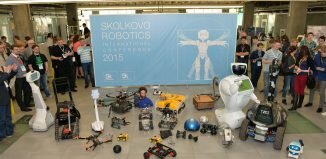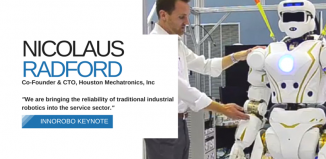THE SCHUNK EXPERT DAYS, Brackenheim-Hausen, Germany, 24-25 February 2016
by Beryl Breas, Managing Director, Innoecho
As the Schunk name is synonymous with very high quality, I was expecting high-end content and I was not mistaken. The organization and program were as thoroughly designed and precise as Schunk’s grippers!
The conference program was a mix of keynotes from researchers at well-known institutes and from directors of robotics or technology companies.
The leitmotif of the 2-day event was “The Human Meets Robotics”, or to put it differently, how can men and robots “live” together and actually collaborate with each other?
After two full days of listening to the various speakers, my initial conclusion is that robotics-related technologies have improved greatly to serve the purpose of robotics, but still not enough yet for the robot to fit in with the complexity of the human environment. This explains why many projects remain in the laboratory phase and cannot go “public”. Indeed, moving about in a world of humans involves many constraints that cannot yet all be mastered by a single robot (and within it, by a software program).
RoDyMan, the pizza-making robot by Professor Bruno Siciliano of the University of Naples, RobotKITchen by Professor Tamim Asfour of the Karlsruhe Institute of Technology, the “Roboception” by Maximo Rao, DLR and Object Detection for grasping in retail and domestic settings by Dr. Richard Borgmann of Fraunhofer IPA, and the robotics arms for cooking by Moley Robotics Ltd. each illustrated this very well in their own way.
You can indeed replicate human action to a certain extent and for one specific purpose, but developing a multipurpose robot program is a real challenge. Such applications are still in the laboratory for the time being or, if put on the market, the robots have limited number of uses.
Robots’ capacities are evolving and improving thanks to increasingly accurate technologies such as sensors, actuators, batteries, AI and vision, but are still not advanced enough for a robot to be capable of multitasking in an open environment alongside human beings. When in a fast-changing human environment, maximum precaution is an absolute must.
 Take a collaborative robot in a factory, for instance. Though there are now many available on the market, in order for them to be safe for any human beings in the vicinity, these robots’ capabilities and performance, including their speed and payload, are bridled. The collaborative robots are made to perform their task slowly enough to be able to stop in time if and when they sense the presence of a person who is getting too close. The current alternatives are to stay away from the robots when they are performing their task or to simply put them back in a cage.
Take a collaborative robot in a factory, for instance. Though there are now many available on the market, in order for them to be safe for any human beings in the vicinity, these robots’ capabilities and performance, including their speed and payload, are bridled. The collaborative robots are made to perform their task slowly enough to be able to stop in time if and when they sense the presence of a person who is getting too close. The current alternatives are to stay away from the robots when they are performing their task or to simply put them back in a cage.
Much research is currently geared towards getting robots out of their cage and towards solutions enabling them to act as much like a human being as possible, and/or to operate in an environment alongside human beings. This should be achieved through Artificial Intelligence algorithms. This is where the truly huge difference between human beings and robots can be seen. We humans do not need to be programmed to adapt to any unknown situation. We have a unique capacity to combine learning from past experiences to face new challenges, be creative and invent solutions.
On the other side, although many researchers are working on robots’ cognitive skills and how to make them learn from experience, we are still very far away from the wealth of sensors humans have, from the way we accumulate experiences and the manner in which they are referenced in our brain. As a result, it is said that robots will probably forever suffer from a lack of creativity.
Hence, when someone asked Professor Sabina Jeschke, an AI researcher from RWTH Aachen University, if robots would one day rule the world, spelling the end of humankind just as we can see in some movies, I knew the answer: a resounding NO, and precisely because of that lack of creativity.

This fascinating researcher gave the same answer, though she formulated it differently: human beings are frightened by what they don’t know. They always “emotionally” expect the worse and do not use reason to assess what is actually happening. To illustrate her viewpoint, she gave the following example: when the telephone was invented, it was supposed to keep people away from each other. That did not happen, and it has actually brought us closer together.
We can cite many fears towards technology that people have expressed in the past and that haven’t played out: the Y2K Millennium bug was supposed to bring about the end of the world, which didn’t happen. Playing video games was supposed to completely isolate our kids and drive them utterly insane, but that hasn’t happened. The Internet was supposed to make people seeing each other face-to-face a relic of the past, but that hasn’t happened either. You see, the human being is a very surprising species. We come up with the most unexpected uses for the technologies that inspire deep fear within us. Our “creativity” will allow us to evolve and adapt to situations like no robot can!
So, should we be afraid of robots? The answer is a straightforward NO. Then why are we?
It has been said that our use of technology is a mirror of our society and our values. The choice comes down to humanity: will we choose the good or the bad side of ourselves? And we can wonder whether this fear of technology in general and robots in particular (all the scarier if they resemble us like Humanoids do) isn’t simply the expression of our inner fear of humankind making the wrong choice? Could it be that we are afraid of ourselves?
At Innorobo, beyond the innovations that are on display to inform the public on how far technology has advanced, beyond the business deals that are made, we believe we need to foster debates on the importance of placing humanity at the heart of robotics development and understand the risks before any major changes rather than wait for them to catch us unexpectedly.
I wish to thank Schunk for raising the question regarding the relationship between Humans and Robots. Thank you for enabling me to reflect, in a non-programmed, creative way on how to co-build a vision of society that embraces the positive aspects of technological progress and prepares solutions for the potential disruptive transformations that it may entail.
While I started this article wanting to write about what I had seen and heard during these two days, I decided to conclude with the need for a Human approach to robotics technologies!
Anyway, here is a list of the people or companies I met at the Schunk Expert days whose creativity particularly struck me.
Creative ways of using robots
Anouk Wipprecht
Robotic fashion design and intuitive interfaces
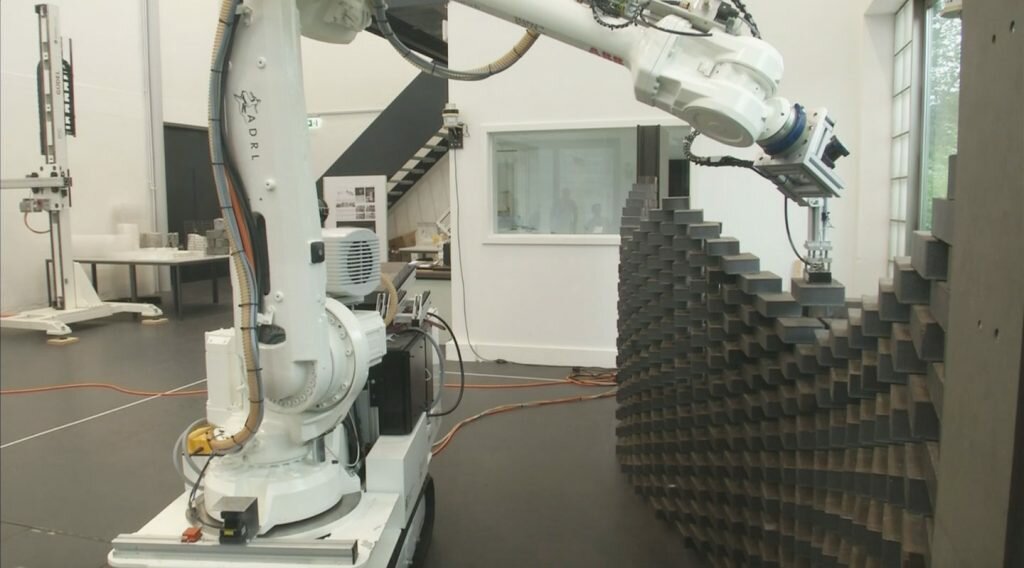
Professor Jonas Buchli, ETH Zurich
Digital manufacturing
When robots become assistants in the construction of buildings
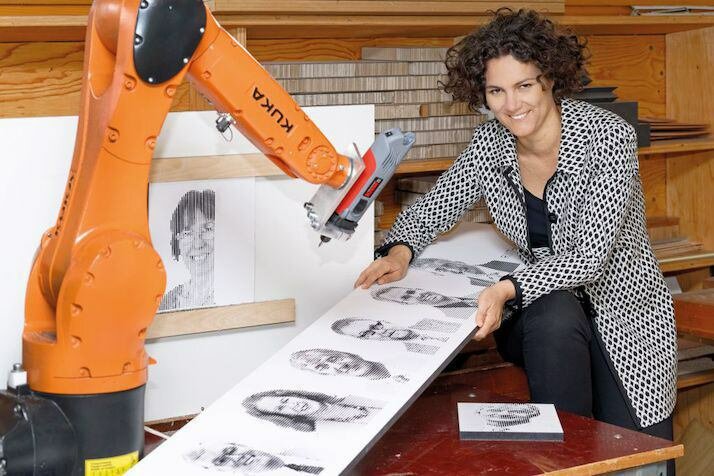
Sigrid Brell Cokcan
Aachen University
Robotic crafts
Innovative ways of developing solutions for the technological challenges facing robotics
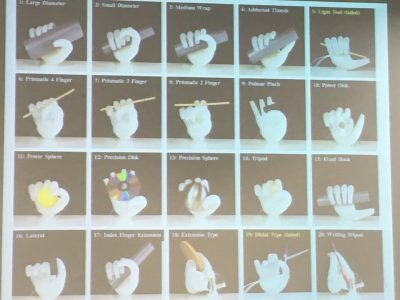

Professor Oliver Brock, TU Berlin
Reinventing grasping for flexible manufacturing and logistics
SOMA Soft manipulation
European project on manipulation
Rubber hand blown up like a balloon
Ákos Dömötör, OptoForce
Tactile sensing in service robotics
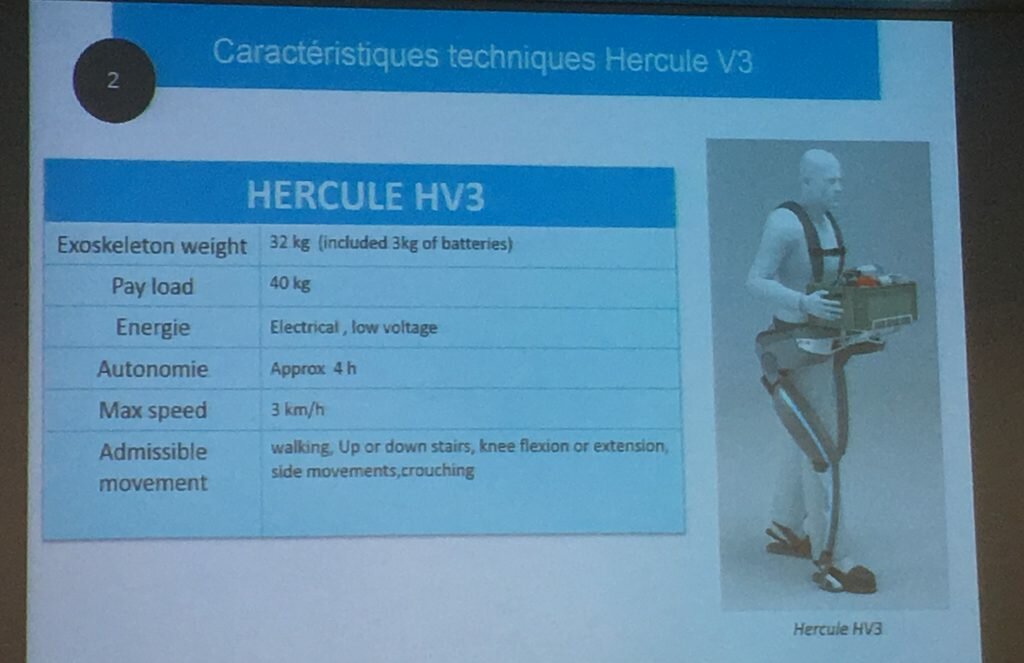
Serge Grygorowisz (RB3D)
The anthropomorphic exoskeleton: is there another way?



